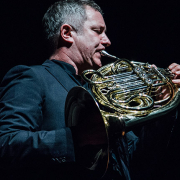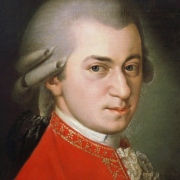The double bass: from ostracism to fame
“The double bass is by far the most important instrument in the orchestra (…) it forms the entire basic orchestral structure on which the rest of the orchestra must rely”
Patrick Süskind's double bass.
When talking about the double bass, it is common to find comments that indicate that for a long time it has had a job, above all, as a support in orchestras. That everything is due to its origin, that its management was complicated, that great exponents of academic music chose to relegate it and that in the end it was popular music—especially jazz—that gave it a predominant place.
This instrument has a long history full of experimentation until reaching today's instrument. Its origin dates back to the 16th century, at the height of the Renaissance, a time that, among other things, gave rise to experimentation in the creation of musical instruments, among which is the violone, a large instrument with strings. of gut—which made its interpretation difficult.
The violin, with the passage of time, underwent several transformations, including the number of strings and its dimensions. In addition, it was also relegated as an accompaniment instrument, while others, such as the violin and the piano, took center stage.
Jazz and the double bass
Even so, the double bass between the 19th and 20th centuries had a strong boost. It began to be seen as an instrument that, in addition to being an accompanist, has soloist qualities. Thus, different widely recognized composers wrote concertos for it. This is the case of Serge Koussevitzky (whose concert for double bass we will hear tonight), Franco Petracchi, Ludwig Streicher, Klauss Stoll, among others.
But this recognition is also due to a genre far from academic music and that emerged, in the mid-19th century, in the slave camps in the United States: jazz. Double bassists like Jimmy Blanton and Slam Stewart—who played, respectively, with Duke Elllington and Benny Goodman—had an impact on the way this instrument is played to give it more prominence in music.
In the words of Eduardo González, music teacher at Eafit and double bassist of the Colombian group Puerto Candelaria, “The double bass in jazz and popular music has an accompanying function, but also a soloist function. It gave him a very relevant position. In classical music, the double bass has had an accompanying function, although from romanticism onwards concerts and sonatas have been written..
Thus, the double bass has earned the recognition that was denied to it for centuries, even reaching literature thanks to authors such as the German Patrick Süskind, with The Double Bass, and the Russian short story writer Anton Chekhov, with History of a Double Bass. And although Christoph Wimmer – Austrian double bassist – assures that due to the history of the instrument it has been “sometimes in the shadow of the orchestra”, concludes that this image has changed, since it is known that “the double bass can sound beautiful”.












